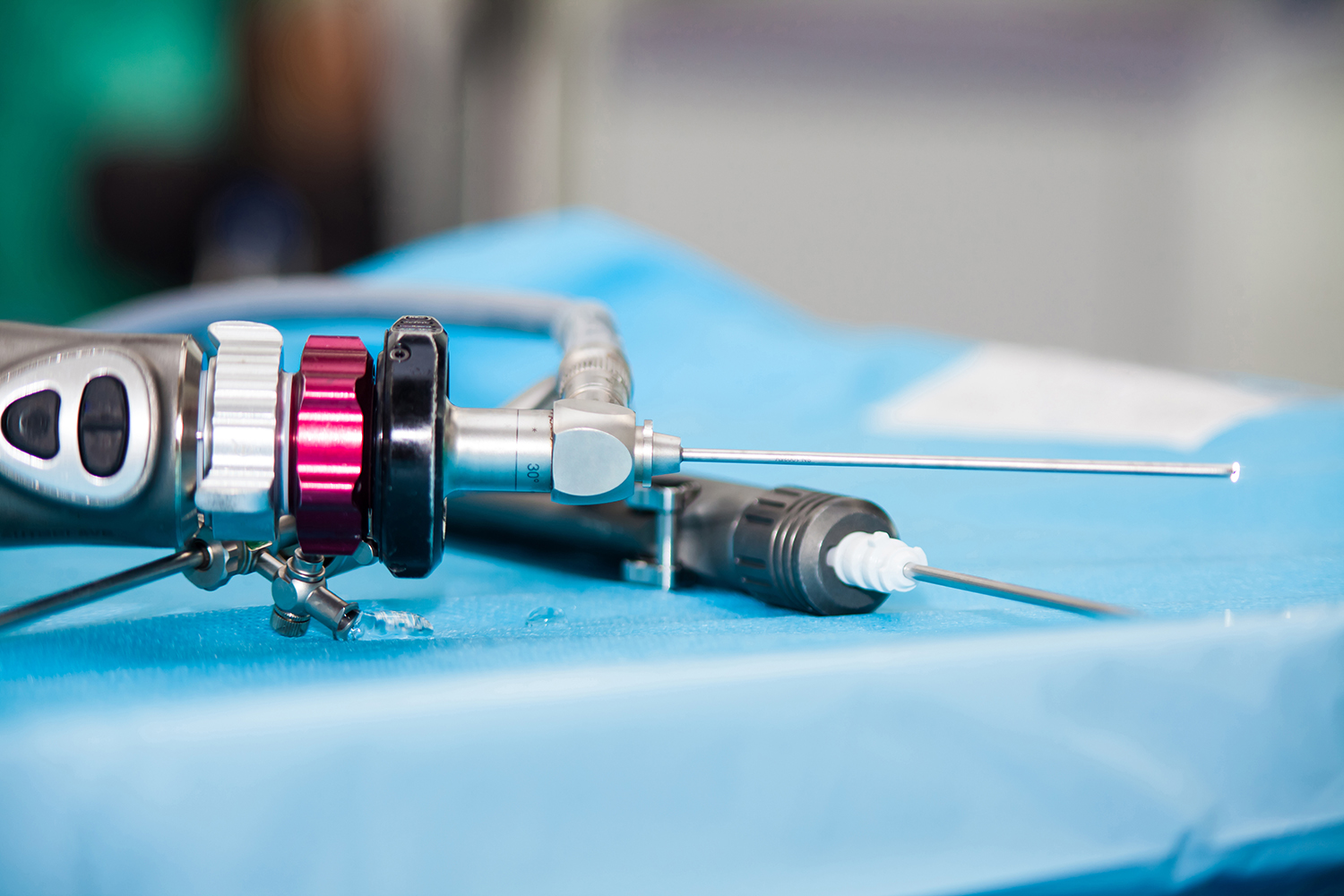What Is Arthroscopy?
Minimally Invasive Surgery
Arthroscopic Surgery
Arthroscopy is a minimally invasive surgical technique used to assess, diagnose, and even repair joint damage from the inside using a specialized instrument known as an arthroscope. Arthroscopy has gained recognition and risen in popularity in part because of high-profile sports figures who have had injuries treated this way. Their swift return to the game is one of many reasons why arthroscopy is a desirable option when considering surgery to a joint. Used interchangeably, “Arthroscopy” or “Arthroscopic Surgery” is considered minimally invasive because it allows the surgeon to both view and treat a joint without fully opening it up. The goals of arthroscopy are:
- A Smaller incision
- Minimal soft tissue trauma
- Less scarring
- Lower infection rates
- Less post-operative pain
- Faster recovery rates
THE BENEFITS OF ARTHROSCOPIC SURGERY
Lower Risk of Complications:
The smaller incisions of an arthroscopic procedure result in less chance of an infection and smaller scars than in more major operations.
Less Pain:
Because no muscles or tendons need to be cut, patients experience less pain and swelling than in a more comprehensive procedure. They are often able to take their first post-surgical steps and go home the same day as their surgery. The incisions made during the surgery start to heal a day or two afterwards.
Faster Recovery Than Open Surgeries:
Minimally invasive procedures create less trauma in the body than more major open surgeries and so patients are able to get back to normal activities faster.
WHAT IS AN ARTHROSCOPE?

Arthroscope ready to be used at the surgery room
An arthroscope is a thin tube about the size of a pencil, attached to a tiny video camera and a fiber-optic light source. The arthroscope is inserted through a tiny incision (about the size of a button-hole) into a joint and enables the surgeon to inspect the joint from the inside. The light is projected through the arthroscope, illuminating the inside of the joint, and the camera sends the video to a monitor. The surgeon watches the video monitor, using the real-time images to evaluate, diagnose and, if necessary, repair joint damage through other tiny incisions called portals. Saline solution may also be introduced into the joint through the arthroscope to make internal structures easier to see, and protect them from the surgical instruments introduced to the area.
While arthroscopy is generally thought of as a surgical technique for joint repair, it was originally used to explore a joint in preparation for open surgery. Arthroscopy is still used for exploration if x-rays and other diagnostic imaging tests raised additional questions or have been difficult to read.
In the future, as technology continues the trend toward miniaturization, and surgeons continue to innovate in their techniques, it will become easier to use arthroscopy to visualize, diagnose and treat tinier joints such as fingers and toes.
Today, conditions that may be treated with arthroscopy include:
- Joint inflammation and infection
- Sudden acute injury
- Tears, scarring and other damage to tendons, ligaments and cartilage
- Bone Fragments loose in the joint
Nearly any joint can be viewed through an arthroscope but the six most common are shown below.
READ OUR ARTHROSCOPY GUIDES:
In conjunction with the American Academy of Orthopedic Surgeons (AAOS), we offer the following short guides to arthroscopic surgery:
- Shoulder Arthroscopy
Shoulder arthroscopy may be indicated to relieve pain from damage to the rotator cuff, labrum, cartilage, tendons and other soft tissues - Elbow Arthroscopy
Elbow arthroscopy may be required to remove loose bone fragments or release scar tissue affecting range of motion - Wrist Arthroscopy
Wrist arthroscopy may be used as a diagnostic tool to explore the joint for the source of chronic wrist pain
Hip Arthroscopy
Hip arthroscopy may be recommended to repair damage to the soft tissues surrounding and cushioning the joint - Knee Arthroscopy
Knee arthroscopy procedures include repair or removal of the meniscus, articular cartilage or synovial tissue, and treatment the bone structures comprising the joint - Ankle Arthroscopy
Ankle arthroscopy may be used to treat everything from impingement and instability to fractures and arthritis
AM I A CANDIDATE FOR ARTHROSCOPIC SURGERY?
If you have already tried non-surgical treatments, such as rest, medications, physical therapy or injections, but your pain persists or you are experiencing range-of-motion issues that are impacting your daily activities, you may be a good candidate for an arthroscopy. We recommend scheduling an appointment with one of our orthopedic surgeons to evaluate your condition and determine if arthroscopic surgery is an option for you. Please visit Our Doctors page to find a specialist near you.
ARE THERE ANY RISKS WITH ARTHROSCOPIC SURGERY?
While Arthroscopy is a less invasive technique, it is still a surgical procedure and though the risks are minimal, there are risks involved with any surgery. Patients usually do very well with arthroscopies, but if there are complications, they may include:
- Infection at the wound site
- Deep Vein Thrombosis (DVT, or blood clots)
- Bleeding
- Swelling
- Nerve, blood vessel or other tissue damage
These complications occur in far fewer than 1% of all arthroscopic surgeries, and our surgeons are highly skilled and experienced in arthroscopic procedures.
